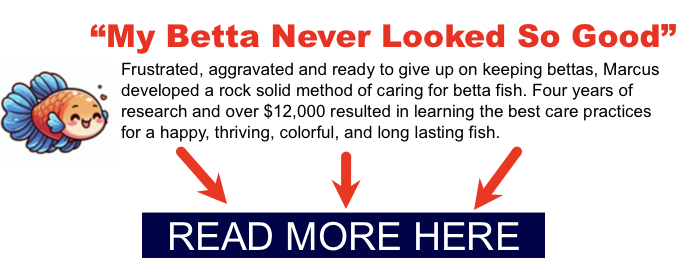Matt
Betta Fish Losing Scales
Is your vibrant betta fish looking a little less colorful lately? Have you noticed missing scales or patches of skin? Don’t panic! While losing scales can be alarming, it’s a common issue with various causes. Your betta can recover and regain its beautiful appearance with proper care and attention.
Understanding the Causes
Scale loss in betta fish can stem from several factors:
- Physical Injuries: Sharp decorations, rough surfaces, or aggressive tank mates can easily damage a betta’s delicate scales. Even rough handling during cleaning can cause harm.
- Diseases and Infections: Bacterial, fungal, or parasitic infections can attack the scales and cause loss. Watch for additional symptoms like redness, swelling, ulcers, or fuzzy patches.
- Water Quality Problems: Ammonia spikes, high nitrites or nitrates, and drastic temperature or pH fluctuations can weaken your betta’s immune system, making it susceptible to infections and scale damage.
- Other Factors: Scale loss can occasionally occur due to old age or stress. Ensure your betta’s environment is calm and stress-free.
Diagnosing the Problem
To determine the cause of scale loss:
- Observe: Look for additional symptoms like wounds, discoloration, or behavioral changes. Take pictures or videos to document the issue.
- Test Water Parameters: Use a reliable test kit to measure ammonia, nitrite, nitrate, pH, and temperature. Compare your results to ideal ranges for bettas.
Treatment and Recovery
The treatment depends on the underlying cause:
- Physical Injuries: Minor scrapes and tears often heal in clean, pristine water. Here’s how to help your betta recover:
- Maintain impeccable water quality: Perform 25-50% water changes every 2-3 days with conditioned tap water that matches the tank temperature. Use a water conditioner to remove chlorine and chloramines.
- To minimize stress, Dim the lights, avoid tank mates, and ensure the tank is in a quiet location.
- Consider aquarium salt: To promote healing, you can add one teaspoon of aquarium salt per 5 gallons of water. However, monitor your betta closely, as some fish may not tolerate salt. If you notice any signs of stress, discontinue use immediately.
- Monitor closely: Watch your betta for signs of improvement or worsening. Consult a vet if the wounds don’t heal within a week or seem infected.
- Infections: Consult a veterinarian for a proper diagnosis and treatment plan. Here are some general possibilities:
- Bacterial infections: These may be treated with broad-spectrum antibiotics like Maracyn or Kanaplex.
- Fungal infections: Antifungal medications like Maracyn-Oxy or Pimafix may be prescribed.
- Parasitic infections: Medications like API General Cure or Paraguard may be recommended depending on the parasite.
- Always follow the veterinarian’s instructions carefully regarding medication dosage and duration of treatment.
- Water Quality Issues: Immediately address any imbalances by performing partial water changes, using a water conditioner, and maintaining stable parameters. Here’s a specific plan:
- Perform a 50% water change immediately. Use conditioned tap water that matches the tank temperature.
- For the next few days, test your water daily. Monitor ammonia, nitrite, nitrate, pH, and temperature.
- Continue performing 25-30% water changes every other day until your water parameters are stable within the ideal ranges for bettas (ammonia and nitrite: 0 ppm, nitrate: below 20 ppm, pH: 6.5-7.5, temperature: 78-82°F).
- Once stable, implement a regular water change schedule. Aim for 25-30% water changes once or twice a week.
Preventing Future Scale Loss
Protect your betta and prevent future issues by:
- Choosing Safe Decor: Opt for smooth, rounded decorations and avoid sharp or abrasive materials.
- Maintaining Pristine Water: Regular water changes, testing, and filter maintenance are crucial for a healthy environment.
- Avoiding Overcrowding: Provide ample space for each fish to reduce stress and aggression.
- Handling with Care: Use a soft net and avoid squeezing or dropping your betta during tank maintenance.
How Long Do Betta Fish Live?
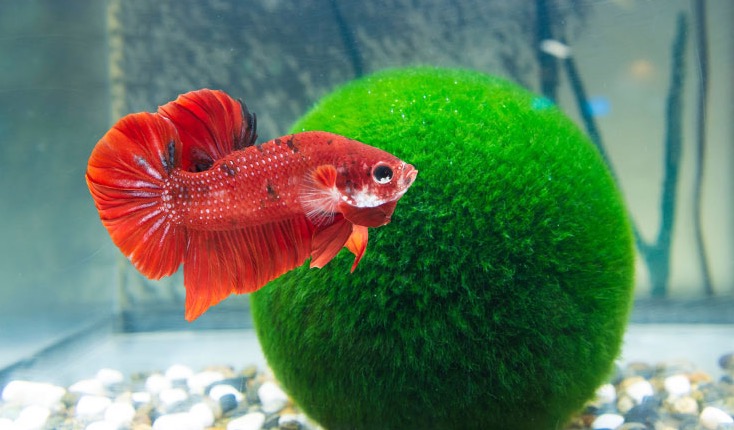
How long do betta fish live? Betta fish are known for their vibrant colors and captivating personalities, making them a favorite among aquarium enthusiasts. With proper care, these fascinating fish can outlive the common expectations of 2-4 years, sometimes thriving for 5 years or more.
Just like humans, betta fish inherit genetic traits that influence their potential lifespan. Store-bought bettas often come from mass breeding operations, where selective breeding for appearances (like long fins and bright colors) can sometimes compromise health. On the other hand, bettas from reputable breeders are often healthier and have a better chance of living longer.
Here’s how you can ensure your betta lives a full and happy life.
Quick Tips for Extending Your Betta’s Lifespan
Here’s a checklist to help your betta live its best life:
- Invest in a Proper Tank: Use a 5+ gallon aquarium with a heater and filter.
- Maintain Pristine Water Quality: Perform regular water changes and monitor parameters with a test kit.
- Feed a Balanced Diet: Provide high-quality pellets and occasional protein-rich treats.
- Create a Stimulating Environment: Add plants, hiding spots, and decorations to enrich your betta’s habitat.
- Avoid Overcrowding: Keep your betta alone or carefully introduce peaceful tankmates like snails or shrimp.
- Stay Observant: Watch for changes in behavior, appetite, or appearance, which could indicate stress or illness.
How To Ensure Your Betta Lives a Long & Healthy Life
Water Quality
Click here to make sure your aquarium water is good
Clean, stable water is essential for your betta’s health. Poor water conditions can stress your fish and lead to illness, significantly shortening its lifespan. Here’s what to aim for:
- Temperature: 78-82°F
- pH: 6.5-7.5
- Ammonia: 0 ppm
- Nitrite: 0 ppm
- Nitrate: Below 20 ppm
Perform weekly water changes (25-50%) and use a filter to maintain these parameters consistently.
Tank Size and Setup
Betta fish need space to swim and explore. A minimum tank size of 5 gallons is recommended, along with the following:
- Hiding Places: Add caves, plants, or decorations for enrichment and to reduce stress.
- Lighting: Use soft lighting to mimic natural conditions.
- Substrate: Fine gravel or sand to create a natural, comfortable environment.
Diet and Nutrition
A healthy diet is crucial for your betta’s longevity. Bettas are carnivores and require a protein-rich diet. Offer:
- High-quality betta pellets or flakes as a staple.
- Frozen or live foods like bloodworms, brine shrimp, or daphnia as occasional treats.
- Avoid overfeeding; 2-3 small meals per day are sufficient.
Stress Management
Stress is one of the leading causes of premature death in bettas. Common stressors include:
- Aggressive Tankmates: Bettas are territorial and prefer living alone.
- Inadequate Hiding Spots: Provide plenty of decorations or plants for security.
- Sudden Environmental Changes: Maintain stable water conditions and avoid drastic temperature shifts.
Disease Prevention
Bettas are susceptible to illnesses like fin rot, swim bladder disease, and ich. Preventative measures include:
- Keeping the tank clean with regular maintenance.
- Observing your fish daily for early signs of illness.
- Quarantining new tankmates or plants to avoid introducing pathogens.
Common Myths About Betta Lifespan
- Myth 1: Bettas thrive in small bowls.
- Fact: Small, unfiltered bowls can quickly accumulate toxins, leading to poor health and shorter lifespans. A larger, filtered tank is essential.
- Myth 2: Bettas don’t need heaters.
- Fact: Bettas are tropical fish and require stable, warm water temperatures between 78-82°F.
- Myth 3: Bettas don’t live long, no matter what.
- Fact: While genetics play a role, proper care can dramatically extend their lifespan.
Caring for a betta fish is both rewarding and fulfilling. By providing a clean, enriching environment and meeting their nutritional and social needs, you can ensure your betta lives a long and healthy life. Remember, the key to their longevity is in your hands. Take the time to nurture your betta, and they’ll reward you with years of companionship and beauty.
Is Your Betta Fish Unhealthy & Dying? Signs of Illness and How to Help
Seeing your beloved betta fish exhibiting signs of ill health and possibly nearing death can be a truly upsetting experience. But don’t despair just yet! Many betta fish illnesses can be successfully treated if caught early enough. This guide will equip you with the knowledge to recognize the signs of an unhealthy betta, understand potential causes of their condition, and take the necessary steps to help your finned friend get back on track.One
One of the best ways to deal with these unknowns is to pickup a copy of this care guide – it literally takes all the pain away from this process.
Recognizing Signs of Illness and a Dying Betta
Click here to learn how to help your betta be happy and healthy again
Your betta fish can’t tell you when they’re not feeling well, but their bodies and behavior will often give you clues:
Visual Red Flags:
- Faded Colors: Vibrant hues turning dull or pale can signal stress or illness.
- Clamped Fins: Fins held close to the body instead of fanned out are often a sign of discomfort.
- Damaged Fins: Torn, frayed, or rotting fins can indicate infection or poor water quality.
- Body Abnormalities: Bloating, lumps, or white spots could be signs of internal issues or parasites.
- Eye Problems: Cloudy, bulging, or protruding eyes often signify infection or injury.
Behavioral Changes to Watch For:
- Lethargy: If your normally active betta is suddenly sluggish, hiding, or struggling to swim, something is wrong.
- Loss of Appetite: Refusing food or spitting it out is a common symptom of many illnesses.
- Labored Breathing: Rapid gill movement or gasping at the surface can indicate trouble breathing.
What’s Making Your Betta Sick?
There are several potential culprits behind your betta’s ailment:
- Water Woes: Poor water quality is a leading cause of betta fish illness. High ammonia, nitrite, or nitrate levels, incorrect temperature, or dirty water can all wreak havoc on their health.
- Nasty Infections: Bacterial, fungal, or parasitic infections like fin rot, ich (white spot disease), and velvet are common in betta fish.
- Stressful Situations: Overcrowding, aggressive tank mates, sudden changes in their environment, or even boredom can stress out your betta and compromise your immune system.
- Physical Injuries: Sharp tank decorations or aggressive fish can cause cuts and abrasions that can become infected.
- Old Age: As betta fish get older, they become more susceptible to illness.
How to Nurse Your Betta Back to Health:
Click here to learn how to improve your betta’s outlook
- Test the Waters: Use a reliable water test kit to check for ammonia, nitrite, nitrate, pH, and temperature. Address any imbalances immediately with partial water changes and adjustments to your filter or heater.
- Quarantine (If Possible): If you have other fish, move your sick betta to a separate, clean tank to prevent the spread of disease.
- Play Detective: Research the symptoms you’ve observed and try to diagnose the problem. Use reputable sources like betta fish forums and care guidesthat specialize in betta fish with expert advice and opinions.
- Treat the Illness: Follow the appropriate treatment protocol once you’ve identified the problem. This may involve medication, specific water changes, adjusting tank conditions, or other remedies.
- Provide TLC: Clean the tank, maintain optimal water temperature, and offer high-quality food to boost your betta’s immune system.
When to Call in the Experts:
- If you’re unsure about the diagnosis.
- If the condition doesn’t improve or worsens with home treatment.
- If your betta appears to be in severe pain or distress.
Prevention is the Best Medicine:
- Regular Tank Maintenance: Keep the water clean with frequent partial water changes and filter cleaning.
- Optimal Diet: Feed your betta a balanced, high-quality diet appropriate for their species.
- Stress-Free Zone: Ensure a peaceful environment with adequate space and no aggressive tankmates.
- Quarantine Newcomers: Always quarantine new fish before introducing them to your main tank to prevent the spread of disease.
Don’t Give Up Hope!
With prompt attention and proper care, many betta fish make full recoveries. Remember, the sooner you identify and address the problem, the better the chances are for your betta to bounce back to their vibrant, healthy self. In addition to online resources, consulting care guides written by experienced betta fish breeders or aquarists is a smart way to troubleshoot common problems and find effective treatment solutions. These guides often contain detailed information on specific diseases, step-by-step treatment plans, and helpful diagrams or illustrations to aid in diagnosis.
Betta Fish Tail Biting
Does your betta fish seem to be snacking on its own tail? While it may seem unusual, tail biting is a surprisingly common behavior in bettas. The good news is that it’s usually not a sign of a serious health issue, and with some investigation and adjustments, you can help your betta kick this habit.
Why Do Bettas Bite Their Tails?
There are several reasons why a betta might nibble on its fins:
- Stress: This is the most common culprit. Bettas are sensitive creatures, and stress can trigger tail biting. Stressors can include poor water quality, a cramped tank, boredom, or even seeing their reflection in the glass.
- Boredom: Bettas are intelligent fish that need mental stimulation. If they don’t have enough to keep them occupied, they may resort to tail biting out of sheer boredom.
- Fin Rot: In some cases, tail biting can be a symptom of fin rot, a bacterial or fungal infection. If your betta’s fins look ragged, discolored, or have white edges, it’s important to treat the underlying infection to stop the biting.
- Genetics: Some bettas, especially those with long, flowing fins, may simply be prone to tail biting due to genetics.
How to Stop Betta Tail Biting
- Improve Water Quality: Ensure your betta’s tank is the right size (at least 5 gallons), the water is clean and well-filtered, and the temperature is stable (around 78-80°F).
- Enrichment: Provide plenty of hiding places, plants, and decorations to create a stimulating environment. You can also try adding a betta hammock or a mirror (for short periods) to keep your betta entertained.
- Tankmates: If your betta is housed with other fish, consider if they might be causing stress. Sometimes, a betta is happier living alone.
- Diet: Ensure your betta is getting a high-quality, varied diet. A lack of nutrients can sometimes contribute to tail biting.
- Treat Fin Rot: If you suspect fin rot, start treatment immediately. You can use aquarium salt or a betta-specific fin rot medication.
- Reduce Stress: Try adding Indian almond leaves or stress-reducing water conditioners to your betta’s tank.
When to Worry
If your betta’s tail biting is severe or doesn’t improve with the above steps, it’s best to consult a betta fish guide book or experienced betta keeper. They can help rule out any underlying health issues and suggest further treatment options.
Betta Fish Constipation
Is your betta fish looking a bit rounder than usual? Don’t panic! Bloating in bettas is a common concern, but it’s important to know that not all bloating is the same. A swollen belly could indicate a simple case of betta constipation (easily treatable!) or a more serious condition like dropsy. This guide will help you differentiate between the two and take the right steps to help your finned friend.
Bloated Betta? Could Be Constipation
A constipated betta will have a swollen belly, but it won’t be as severe as in dropsy. Their scales won’t stick out, and they may still be active and interested in food, although they might have a decreased appetite.
Pay attention to any changes in your betta’s swimming behavior, appetite, and waste production to help narrow down the cause of their bloating.
Dropsy vs. Constipation: What’s the Difference?
- Dropsy:
- If your betta’s scales are sticking out like a pinecone (a condition called “pineconing“), their belly is extremely swollen, and their eyes are bulging, these are classic signs of dropsy. This is a serious condition caused by organ failure, often due to bacterial infections, parasites, or poor water quality. Unfortunately, dropsy is often fatal, but early intervention with antibiotics may be effective in some cases. If you want to learn more about dropsy, click here.
- Constipation: This is a digestive issue, usually caused by overfeeding, a low-fiber diet, or lack of exercise. The good news is that betta constipation is usually easily treatable with dietary changes and Epsom salt baths (more on that later!).
Betta Constipation Treatment
If you suspect your betta is constipated, here’s a simple betta constipation treatment plan you can follow:
- Fasting: Stop feeding your betta for 24-48 hours to give their digestive system a break.
- Feed Daphnia or Blanched Peas: After fasting, offer your betta a few daphnia or a small piece of blanched pea. These foods are high in fiber and can help get things moving again.
- Epsom Salt Baths: Epsom salt can help draw out excess fluid and reduce bloating. Prepare a bath with 1 teaspoon of Epsom salt per gallon of water and let your betta soak for 10-15 minutes. Repeat daily for a few days if needed.
Remember to monitor your betta’s progress closely and adjust the treatment as necessary.
When to Suspect Dropsy
If your betta’s bloating is severe, they have pineconing scales, or they’re extremely lethargic, dropsy is a more likely culprit. In this case, time is of the essence. Consult a betta fish care guide book or experienced betta keeper immediately for advice on treatment options, which may include antibiotics or palliative care.
Conclusion
A bloated betta can be a worrying sight, but by understanding the differences between dropsy and constipation, you can quickly determine the cause and take appropriate action. With prompt treatment, most cases of betta constipation are easily resolved. However, don’t hesitate to seek professional help if you suspect dropsy.
Remember, prevention is key! Feed your betta a balanced diet, avoid overfeeding, and maintain excellent water quality to keep their digestive system healthy and prevent constipation.
Diagnosing & Treating Septicemia for a Betta Fish
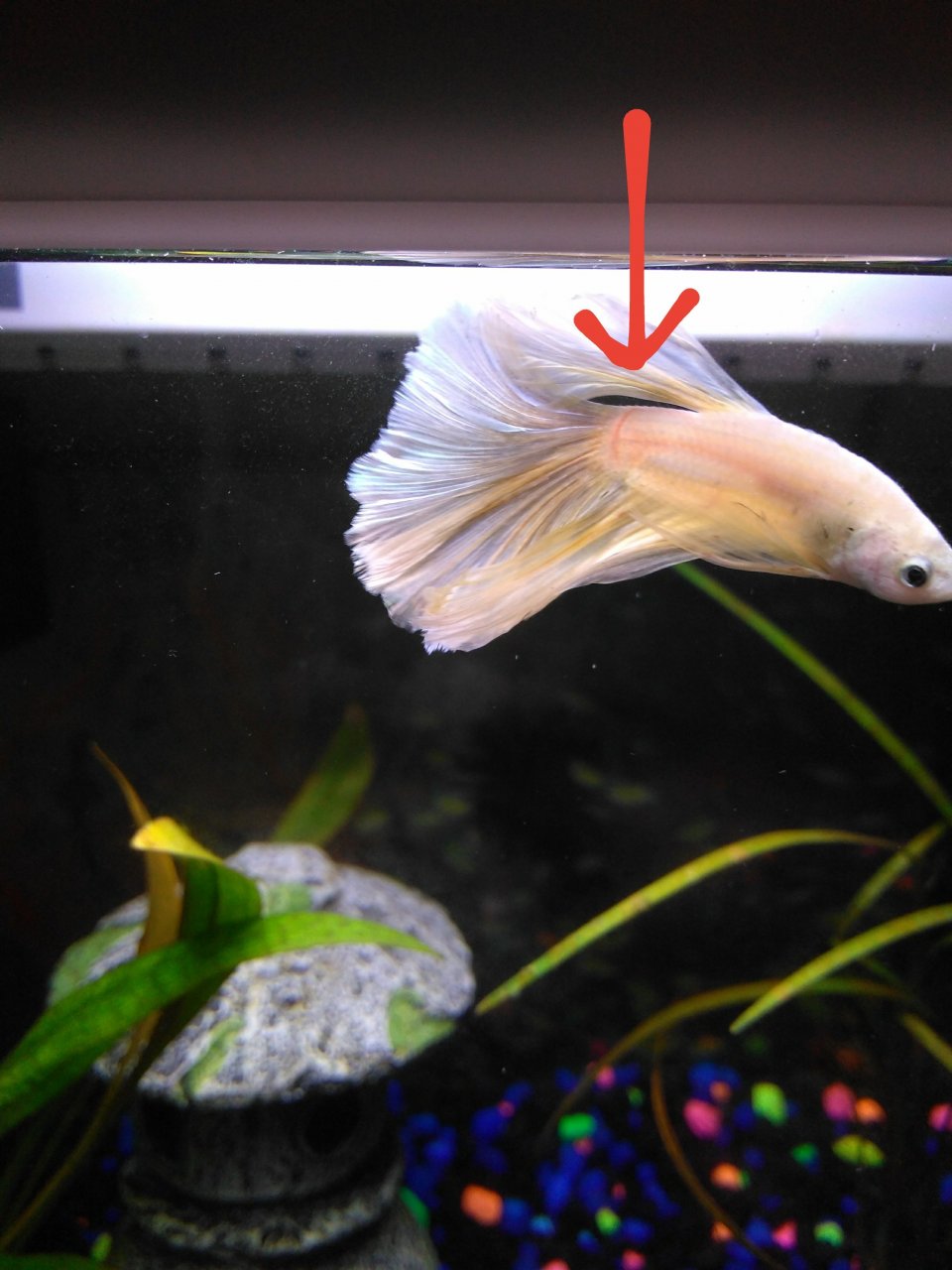
credit: My Aquarium Club
Worried your betta is suddenly lethargic, not eating, or showing strange red streaks on its body?
These can be signs of septicemia—a dangerous bacterial infection that can kill your betta if not treated fast. Here’s what you need to know (and do!) to give your betta the best chance of recovery.
What Is Septicemia in Betta Fish?
Septicemia—sometimes called “blood poisoning”—happens when bacteria get into your betta’s bloodstream and spread throughout its body. This can happen if your fish gets a wound, lives in poor water conditions, or is under stress. Quick treatment is crucial.
How Does It Start?
-
Wounds: Open sores or cuts are an easy entry point for bacteria.
-
Poor Water Quality: Dirty water, high ammonia or nitrites, or infrequent water changes weaken your betta’s immune system.
-
Stress: Overcrowded tanks, aggressive tank mates, or temperature swings make bettas more likely to get sick.
Red Flag Symptoms of Septicemia
Early detection can save your betta’s life. Here’s what to watch for:
| Symptom | What It Looks Like | Urgency |
|---|---|---|
| Red streaks | Red lines or patches on body/fins/tail | Critical |
| Lethargy | Lying at the bottom, barely swimming | High |
| Loss of appetite | Ignoring food, not eating at all | High |
| Rapid breathing | Gasping at the surface, breathing fast | High |
| Fin clamping | Fins held tight against the body | Medium |
| Sores/Ulcers | Open wounds, white or red patches | High |
If you see two or more of these at once, act immediately.
What To Do If You Suspect Septicemia
-
Isolate Your Betta:
Move your fish to a clean hospital tank with treated water. This protects your main tank and makes medicating easier. -
Check Water Quality:
Test ammonia, nitrite, and nitrate levels in both tanks. Fix any issues right away—bad water is often the root cause. Use this guide which talks more about ideal water parameters. -
Consult a Fish Vet or Experienced Store:
Septicemia almost always needs antibiotics (like Kanaplex, Maracyn 2, or a vet-prescribed med). Don’t just dump in store remedies—get proper guidance on meds and dosage. -
Start Antibiotics:
Follow instructions exactly for the full course—even if your fish seems better early. Stopping too soon often causes a relapse. API Betta Fix works great. -
Do Daily Partial Water Changes:
Change 25% of the water in the hospital tank each day. Clean water is just as important as the meds. -
Keep It Calm:
Minimize light and noise. Stress slows healing. -
Feed Gently (or Withhold If Necessary):
Sick bettas often don’t eat, and antibiotics can upset their stomach. Offer high-quality food or medicated food if recommended, but don’t force it.
Recovery tip: Even with perfect care, septicemia is sometimes fatal. Quick action gives your betta the best chance.
Prevention: How To Keep Your Betta Safe
-
Maintain excellent water quality: Weekly water changes, reliable filter, and regular water testing.
-
Don’t overcrowd: One betta per tank is safest.
-
Quarantine new fish: Keep any new tank mates in a separate tank for at least 2 weeks before adding them.
-
Be gentle: Avoid rough handling and sharp decor.
-
Watch for stress: Fix aggressive tank mates, sudden temperature swings, or noisy locations.
FAQ: Common Betta Septicemia Questions
Can septicemia spread to other fish?
Yes, the bacteria can infect others, especially in poor water. Isolate the sick betta and monitor tank mates.
Will aquarium salt help?
It can help prevent secondary infections, but you still need antibiotics for septicemia itself.
Are store-bought remedies enough?
Not usually. True septicemia needs real antibiotics from a vet or trusted fish expert.
Is it contagious to humans?
No—septicemia in fish is not a threat to people, but always wash your hands after tank maintenance.
When To Get Help
-
Your betta won’t eat for more than 24 hours
-
You see red streaks or open sores
-
Multiple symptoms show up at once
Don’t panic—most cases happen due to water issues and can be prevented in the future. Early action gives your betta the best shot at recovery!
Betta Fish Tumor
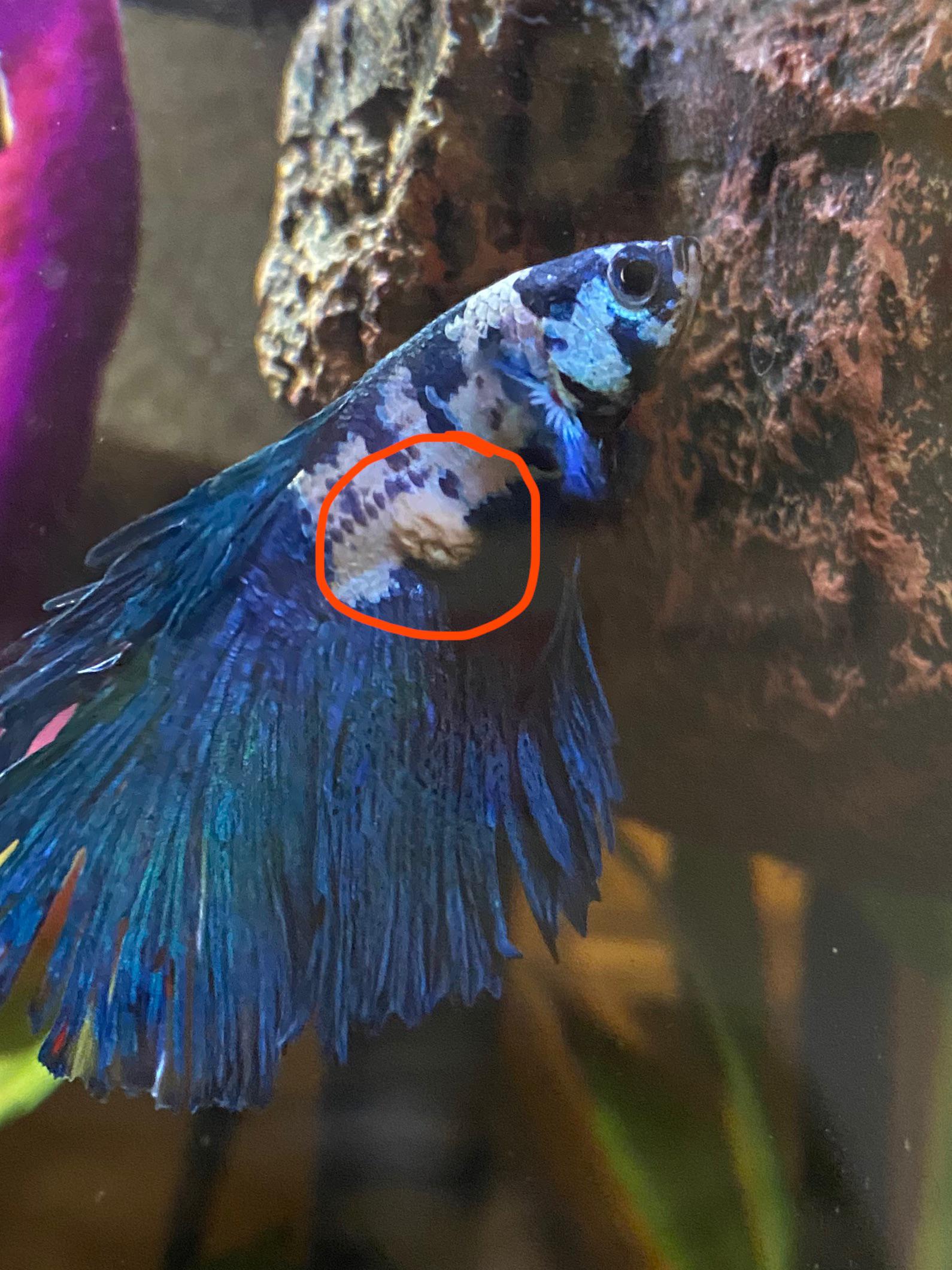
Betta fish tumor. Credit: reddit
Identifying a Tumor in Your Betta
Click here for the betta fish care guide ebook
Betta fish are loved for their stunning colors, graceful fins, and energetic nature, making them a favorite among aquarium enthusiasts. So, it’s natural to feel worried if you notice a lump or tumor-like growth on your betta.
The reassuring news is that not all tumors are harmful, and with the right care, many can be treated or managed. This guide will help you understand betta fish tumors, recognize the signs, and provide practical tips for treatment and prevention.
- Benign (non-cancerous): These are more common and typically don’t spread.
- Malignant (cancerous): Rare in bettas but potentially more harmful as they can invade tissues.
While tumors are often linked to genetics or aging, other factors, such as water quality and diet, can play a role.
Symptoms of Tumors in Betta Fish
Knowing the symptoms of tumors can help you act quickly:
- Visible Lumps: Tumors can vary in size, from small bumps to large growths.
- Discoloration: The lump may appear red, white, or darker than the surrounding tissue.
- Changes in Swimming Behavior: Difficulty swimming or balance issues.
- Lethargy: Decreased activity and prolonged resting at the bottom of the tank.
- Loss of Appetite: Refusing food or eating less than usual.
- Breathing Difficulty: Gasping at the surface or rapid gill movement.
If you observe any of these symptoms, consult a veterinarian specializing in fish care for a diagnosis.
Causes of Tumors in Betta Fish
Tumors can result from a variety of factors, including:
- Genetic Predisposition
- Some bettas are more prone to tumors due to their breeding lineage.
- Poor Water Quality
- High ammonia, nitrite, or nitrate levels stress your betta, weakening their immune system.
- Low-Quality Diet
- Nutritional deficiencies can increase the risk of tumor development.
- Infections
- Bacterial or fungal infections may cause abscesses or growths that resemble tumors.
- Aging
- Older bettas are more likely to develop tumors due to natural cell mutations.
Not All Lumps Are Tumors
Before assuming a lump is a tumor, consider these possibilities:
| Condition | Description | Treatment |
|---|---|---|
| Abscess | A localized infection that appears as a white lump. | Clean water, antibacterial medication. |
| Fungal Infection | Cotton-like growth on the body. | Antifungal treatments like methylene blue. |
| Ulcers | Red, inflamed sores caused by infections or injuries. | Water quality improvement, antibacterial medication. |
| Dropsy | Bloating due to kidney failure, often with pinecone-like scales. | Epsom salt baths, antibacterial treatment, and supportive care. |
| Swim Bladder Disease | Caused by constipation, injury, or infection; affects buoyancy. | Fasting, feeding deshelled peas, or using medications for underlying infections. |
| Parasites | Lumps caused by parasites like velvet or columnaris. | Antiparasitic medication. |
How to Treat Tumors in Betta Fish
Isolate the Fish
Move your betta to a quarantine tank to reduce stress and prevent potential spread of infection.
Check Water Parameters
Ensure the water is pristine. Ideal parameters for bettas are:
- pH: 6.5–7.5
- Ammonia: 0 ppm
- Nitrite: 0 ppm
- Nitrate: Less than 20 ppm
- Temperature: 78–80°F
Use Medication (If Necessary)
Depending on the type of tumor, you may need:
- Antibacterial treatments for abscesses or ulcers.
- Antifungal medications for fungal growths.
- Aquarium salt to support general healing.
Maintain a Stress-Free Environment
Provide plenty of hiding spots and avoid sudden changes to their tank setup.
Preventing Tumors in Betta Fish
Prevention is key to your betta’s health:
- Feed High-Quality Food: Choose nutritionally balanced betta pellets and supplement with live or frozen treats.
- Ensure Clean Water: Perform weekly water changes and use a reliable filter.
- Quarantine New Fish: Avoid introducing pathogens by isolating new fish before adding them to the tank.
- Avoid Stressors: Provide a stable, enriched environment with hiding spots and gentle water flow.
When to Consider Euthanasia
If your betta’s tumor becomes untreatable and they show signs of severe discomfort, euthanasia may be the kindest option. Use clove oil as a humane method to minimize suffering.
Betta Hole In Head: Causes, Treatment, Prevention
If you’ve noticed small holes or pits on your betta fish’s head, don’t panic. While alarming, hole-in-the-head (HITH) disease is a common ailment that can be successfully treated and even prevented with the proper knowledge and care. This guide will walk you through everything you need about HITH, from its causes and symptoms to treatment and prevention strategies.
What is Hole in the Head Disease?
HITH is not just a cosmetic issue; it’s a sign of an underlying health problem. The disease manifests as small holes or lesions, usually on the head but sometimes along the body. These holes can deepen and become infected if left untreated. It’s important to distinguish HITH from the natural sensory pits that some betta fish have along their lateral line. These pits are typical and not a cause for concern.

credit aquariumcoop.com
Causes of Hole in the Head Disease
Click here if you want to learn how to heal ‘hole in head’ phenomenon
HITH has several potential causes, often acting in combination:
- Poor Water Quality is the most common culprit. High levels of ammonia, nitrite, and nitrate, along with improper pH and temperature, stress the fish and weaken their immune systems. Use a testing kit!
- Parasites and Bacteria: Hexamita, Spironucleus, and other microorganisms can thrive in poor water conditions and infect the fish, leading to HITH.
- Nutritional Deficiencies: A lack of vitamins (especially vitamin C) and minerals can compromise the fish’s immune response, making them more susceptible to disease.
- Environmental Stress: Factors like overcrowding, aggressive tank mates, or inadequate hiding places can stress the fish, leading to health problems.
- Genetics: Some bettas may have a genetic predisposition to HITH.
Symptoms to Watch For
Early detection is crucial for successful treatment. Watch for these signs:
- Small holes or pits: Initially, they may look like tiny indentations on the head.
- Discoloration: The area around the holes may lose color or appear red and inflamed.
- Mucus or slime: Excess mucus production around the head.
- Behavioral changes: Loss of appetite, lethargy, hiding, or rubbing against objects in the tank.
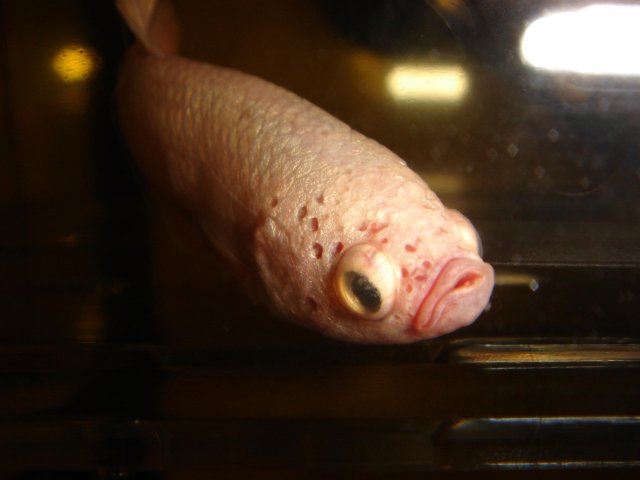
credit: Aquariacentral.com
Treating Hole in the Head Disease
If you suspect HITH, act quickly. The earlier you intervene, the better the chances of recovery. Treatment usually involves:
- Improving Water Quality: Perform frequent water changes, test water parameters regularly, and ensure the tank is adequately filtered and maintained.
- Medications: Anti-parasitic and antibacterial medications may be necessary. Consult a betta fish care guidebook for diagnosis and treatment recommendations — Kanaplex is a popular anti-bacterial option.
- Dietary Adjustments: To boost the fish’s immune system, offer a high-quality diet rich in vitamins and minerals. Consider adding vitamin C supplements.
- Stress Reduction: Optimize the tank environment by providing adequate hiding places, removing aggressive tank mates, and avoiding overcrowding.
Preventing Hole in the Head Disease
Prevention is always better than cure. Here’s a comprehensive plan to keep your betta fish healthy and thriving:
- Maintain Pristine Water Quality: This is the cornerstone of betta health. Perform weekly partial water changes of 25-50%, depending on your tank size and bioload. Use a reliable water testing kit to monitor ammonia, nitrite, and nitrate levels and keep them within safe ranges for bettas (ammonia and nitrite at zero, nitrate below 20 ppm). Invest in a good-quality filter appropriate for your tank size and ensure it’s properly maintained.
- Provide a Nutritious Diet: Betta fish are carnivores and require a protein-rich diet. Click to learn about the best foods for betta fish. Choose high-quality betta pellets as the staple food, and supplement with frozen or live bloodworms, brine shrimp, or daphnia a few times a week. Avoid overfeeding, as this can contribute to water quality problems.
- Create a Stress-Free Environment: Stress is a significant weakening factor for fish. Provide your betta with an appropriately sized tank for its needs (at least 5 gallons for a single betta). Decorate the tank with silk or live plants to offer hiding spots and enrich the environment. Avoid tank mates that could nip at the betta’s fins or bully it. If you must have tank mates, choose peaceful community fish like celestial pearl danios or neon tetras.
- Quarantine New Fish: New arrivals can introduce diseases to your existing fish. Set up a quarantine tank and house new fish there for several weeks before introducing them to the main tank. This allows you to monitor them for any signs of illness and prevents potential outbreaks in your main display.
Betta Fish Names Generator
Try Our Betta Fish Name Generator
Betta Fish Name Ideas
Getting a betta? You might want to check out this care guidebook.
| Appearance | Personality | Inspired Names | Gender Specific |
|---|---|---|---|
| Red | Energetic | Ember, Flare, Ruby | Male: Apollo, Mars |
| Blue | Calm | Aqua, Sapphire, Neptune | Female: Luna, Venus |
| Purple | Royal | Amethyst, Violet, Regal | Male: King, Thor |
| Multi-colored | Playful | Kaleidoscope, Rainbow, Mosaic | Female: Aurora, Rainbow |
| Crowntail | Majestic | King, Queen, Crown Jewel | Male: Sir Fin, Duke |
| Veiltail | Graceful | Princess, Seraphina, Angel | Female: Duchess, Lady |
Dive into Personal Connections
Think of the things that make you you. What are your passions? Maybe your betta could be named “Sirius” after your favorite Harry Potter character or “Maui” if you love Moana. Perhaps a special word in another language holds meaning for you. A nickname from a funny memory or inside joke could also be the perfect fit.
Name by Appearance
Your betta’s stunning colors and unique features can be a goldmine for names. A fiery red betta might be “Ember” or “Crimson,” while a shimmering blue one could be “Sapphire” or “Neptune.” Does your fish have elegant, flowing fins? Maybe “Queen,” “Princess,” or “Prince” would be fitting. Even unique patterns or markings can inspire names like “Spot,” “Marble,” or “Ziggy.”
Capture Personality
Is your betta a little ball of energy zooming around the tank? Names like “Flash,” “Zippy,” or “Sparky” could capture that spirit. Or perhaps your fish is more laid-back and chill. “Zen,” “Peaceful,” or “Tranquil” might be more suitable. Maybe your betta is constantly exploring and curious. “Finnegan,” “Dory,” or “Curious George” could be fun options.
Gender-Specific Names (Optional)
If you know your betta’s gender, you can choose a name that fits accordingly. For males, classic names like “Apollo,” “Thor,” or “Hercules” might be appealing. For females, elegant names like “Athena,” “Luna,” or “Aurora” could be a great match.
Bonus Tips for Brainstorming Success
- Write it all down: Don’t be afraid to jot down any idea that pops into your head. You never know what might spark inspiration!
- Mix and match: Combine words from different categories to create unique names. “Blue Moon,” “Ember Star,” or “Zen Warrior” are just a few examples.
- Say it out loud: How does the name sound when you say it? Does it feel suitable for your fish?
- Research: Look up meanings and origins of names to add depth and symbolism.
Betta Eye Problems
Betta fish are captivating creatures that make wonderful pets, but like all living beings, they can experience health issues. One area that requires attention is their eyes. Understanding betta eye anatomy and recognizing potential problems is crucial for ensuring their well-being. In this guide, we’ll delve into the world of betta eye health, shedding light on common issues and offering guidance on prevention and treatment.
If your betta is suffering from eye trouble, consider checking out our betta fish care guide which talks about these issues and their treatment. Otherwise read this post because we dive into some common eye issues you might notice with a betta fish.
Common Betta Eye Problems
| Eye Problem | Description |
|---|---|
| Popeye (Exophthalmia) | One or both eyes bulge outwards, often caused by poor water quality, injury, or infection. |
| Cloudy Eye | Eye becomes cloudy or opaque, possibly due to bacterial infection, parasites, or injury. |
| Eye Flukes | Small parasites attaching to the eye, causing irritation and inflammation. |
| Cotton Wool Disease | Fungal infection affecting the eyes, causing swelling and a white, cottony growth. |
- Popeye (Exophthalmia): One of the most noticeable eye issues in bettas is Popeye, a condition where one or both eyes protrude or bulge outward. This bulging can be caused by bacterial infections, injuries, poor water quality, or even a gas bubble disease. Along with the bulging, you might observe cloudiness, redness, lethargy, and a decreased appetite in your betta.
- Cloudy Eye: A cloudy or hazy appearance over the eye is another common problem. This is often a result of bacterial or fungal infections, parasites, injuries, or subpar water conditions. Your betta might also experience redness or swelling around the eye.
- Other Eye Issues: Bettas can also develop cataracts, which appear as cloudiness within the lens of the eye, or corneal ulcers, which are open sores on the cornea. They can also develop a cotton-like appearance, and eye flukes.
PopEye
Eye problems can be very dangerous if you don’t take action. Click here.
Popeye, or exophthalmia, is a condition where one or both eyes of a betta fish swell and protrude abnormally from the head. This condition can be caused by infections, physical trauma, or poor water quality. If left untreated, can lead to blindness or even eye loss.
Popeye is a pretty obvious issue – see the picture below.

Normal Betta Eyes vs Popeye
Take a look at the table below which compares normal healthy betta eyes vs bettas suffering from popeye. We cover size, clarity of the eye, behavior changes, causes, treatment, and more.
| Feature | Normal Betta Eyes | Popeye (Exophthalmia) |
|---|---|---|
| Size & Shape | Proportional, round, and symmetrical | One or both eyes are swollen and bulging abnormally |
| Clarity | Clear, no cloudiness or discoloration | Cloudy, white, red, or hazy appearance |
| Symmetry | Both eyes are the same size and shape | One or both eyes may be larger or deformed |
| Fluid Retention | No excess fluid buildup | Eye may have fluid accumulation, appearing swollen |
| Behavior | Responds to movement and light normally | May show lethargy, reduced vision, or lack of response |
| Causes | Healthy conditions, no infections or injuries | Bacterial/fungal infection, injury, or poor water quality |
| Treatment Needed? | No treatment necessary | Requires clean water, salt baths, and possibly antibiotics |
| Risk of Eye Loss? | No risk | In severe cases, the eye may rupture or fall out |
| Prevention | Regular water changes, safe tank environment, balanced diet | Maintain clean water, avoid sharp objects, quarantine new fish |
Click Here to Heal Betta Fish Eyes
Normal Betta Fish:
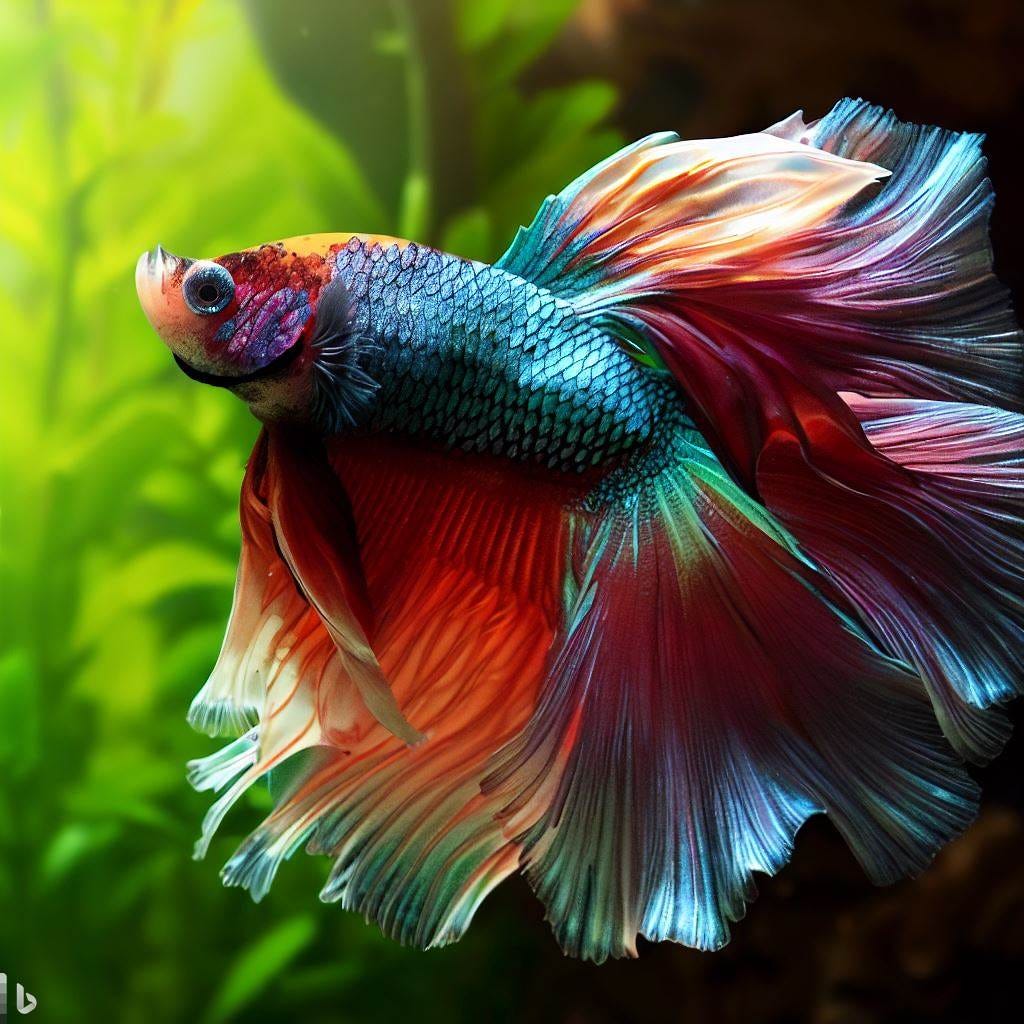
- Eyes are clear and symmetrical.
- No bulging or protruding eyes.
- Healthy appetite and active swimming behavior.
Betta Fish with Popeye:

- One or both eyes are swollen and protruding.
- Eyes may appear cloudy or discolored.
- Often accompanied by redness or inflammation around the eye.
- Fish may exhibit lethargy, loss of appetite, and difficulty swimming.
Treating and Preventing Betta Eye Problems
Seeking Professional Help: If you notice any abnormalities in your betta’s eyes, it’s crucial to consult a veterinarian who specializes in fish. They can diagnose the issue and recommend treatment.
Home Care and Remedies: Depending on the cause, you can try some home remedies while awaiting veterinary advice. For mild cases of Popeye, Epsom salt baths can sometimes help reduce swelling. If the problem is related to water quality, immediate partial water changes and addressing the root cause are essential. It’s also important to quarantine any affected fish to prevent the spread of infection.
Cloudy Eye
A hazy or opaque appearance in one or both of your betta’s eyes is indicative of a cloudy eye. This condition often stems from bacterial or fungal infections, parasites, injuries, or poor water quality. Accompanying symptoms may include redness or swelling around the eye, lethargy, and a decreased appetite.
Treatment and Prevention:
- Water Quality: If water quality is the culprit, immediate partial water changes and addressing the underlying issue (such as ammonia spikes or high nitrite levels) are crucial.
- Medication: For bacterial or fungal infections, consult a veterinarian for appropriate medication. Antifungal or antibacterial treatments might be necessary.
- Quarantine: Isolate the affected betta to prevent the spread of infection to other fish in the tank.
- Supportive Care: Maintain pristine water conditions, ensure adequate filtration and aeration, and feed a nutritious diet to bolster your betta’s immune system.
Eye Flukes
Eye flukes are tiny parasites that latch onto a betta’s eyes, causing irritation, inflammation, and discomfort. You might observe your betta rubbing their eyes against objects or flashing (darting around erratically) in an attempt to dislodge the parasites.
Treatment and Prevention:
- Medication: A veterinarian can prescribe anti-parasitic medication to eliminate eye flukes.
- Quarantine: Isolate the affected betta to prevent the spread of parasites to other fish.
- Water Changes: Perform frequent partial water changes to help reduce the number of parasites in the tank.
- Cleanliness: Maintain a clean tank environment to minimize the risk of parasite infestations.
Cotton Wool Disease
Cotton wool disease, a fungal infection, can manifest as white, cottony growths on your betta’s eyes, causing them to appear swollen and irritated. This condition often arises due to stress, poor water quality, or a weakened immune system.
Treatment and Prevention:
- Medication: Antifungal medication prescribed by a veterinarian is typically necessary to treat cotton wool disease.
- Water Quality: Improve water quality by performing frequent water changes and ensuring proper filtration.
- Stress Reduction: Minimize stress by providing a suitable environment with ample hiding places and avoiding overcrowding.
- Quarantine: Isolate the affected betta to prevent the spread of the fungal infection.


